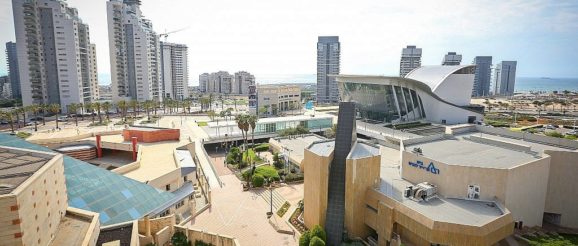Ashdod, Acre, Bat Yam chosen to be part of Bloomberg’s city-innovation program | The Times of Israel

Three Israeli cities and one southern region have been selected to take part in a new initiative to boost city innovation and residents’ welfare by adopting tools set out by Bloomberg Philanthropies, the charitable arm of presidential contender and former New York City mayor Michael Bloomberg.
On Wednesday, the Interior Ministry and the Peres Center for Peace and innovation said they had selected the cities of Ashdod, Acre, Bat Yam, and the region of the Western Negev to take part in the first round of the Hazira initiative, which aims to bring civic and city innovation to municipalities across Israel.
The program was launched in September this year, to “find creative ways to address complex challenges with limited resources.” A call for applications was submitted, with 24 cities and five regional clusters across Israel requesting to join the initiative.
The selected cities and region will now start a two-year process in which they will select local so called “i-teams” of six members who will get professional training by Hazira, using a set of tools developed by Bloomberg Philanthropies, that will teach them how to address the challenges of their city, considering both sustainability and innovation.
The program seeks to boost city and civic renewal in 12 municipalities across Israel over the course of five years, by, for example, boosting shared workspaces and entrepreneurial hubs, and creating affordable school lunches. It will build on the Innovation Teams program set up by Bloomberg already running in several cities. cities, with the so called i-teams on the ground.
Bloomberg Philanthropies has already been working with Jerusalem and Tel Aviv since 2015 and Beersheba since 2017, and the program is now expanding to other cities.
In the selection process, each applicant was asked to identify three challenges that their city or cluster faces that they feel is most crucial to address. A committee comprised of representatives from Bloomberg Philanthropies, the Ministry of the Interior, and the Peres Center for Peace and Innovation ranked the applications and selected the winning cities.
Bloomberg Philanthropies has invested in 510 cities and 129 countries around the world to improve residents’ quality of life. The organization focuses on five key areas for creating change: arts, education, environment, government innovation, and public health. In 2018, Bloomberg Philanthropies distributed $767 million in funds, according to data provided by the organization.
With a little over 250,000 residents, Ashdod is Israel’s sixth-largest city. It is located on the Mediterranean shore, about 30 miles south of Tel Aviv. Ashdod is home to one of Israel’s largest ports, and its economy is mostly based around heavy industry and logistics. Its diverse population includes large numbers of ultra-Orthodox Jews and Jewish immigrants, especially from the former Soviet Union.
Acre is a city of about 60,000 residents, located on the Mediterranean coast in the north of Israel, about 13 miles from the Lebanese border. Acre is an ancient city, with a history going back to the Bronze Age. It is considered a “mixed” city, with about 40 percent non-Jewish residents, mostly Arabs. Besides its history, it is also known for its cultural scene, including the annual fringe theater festival, and as a tourist destination.
Bat Yam is a city of about 160,000 residents, bordering Tel Aviv to the south. Despite its central location and attractive shoreline, the city suffers from a lack of vacant land for development, long-standing financial issues, and demographic challenges such as an aging population and a large immigrant community.
The West Negev Regional Cluster is made up of nine local authorities with a total population of about 230,000. The four member cities include Rahat, the largest Bedouin city in Israel, as well as Sderot, Netivot and Ofakim, three historically disadvantaged “development towns” created in the 1950s for Middle Eastern immigrants. In addition, the cluster also includes five regional councils, with more well-off rural communities. The area is adjacent to the Gaza Strip, and has been subject to numerous rocket attacks from the Strip.
